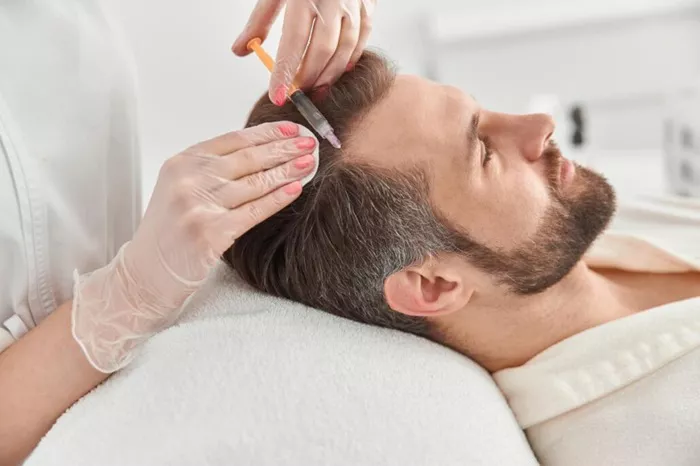Hair transplants have become a popular solution for restoring hair growth in individuals suffering from hair loss. One of the critical stages following a hair transplant procedure is the care of the scalp, especially the washing of scabs that form as part of the healing process. Properly managing these scabs is essential for ensuring the best possible outcome and avoiding complications. This article provides a comprehensive guide on how to wash scabs after a hair transplant, offering practical advice and detailed instructions for effective care.
Understanding the Scabbing Process
Scabs Formation
After a hair transplant, scabs are a natural part of the healing process. These scabs form as a result of tiny incisions made in the scalp to implant new hair follicles. The scalp will initially have redness and swelling, followed by the formation of small, dry, crusty patches or scabs. These scabs protect the newly transplanted hair follicles while they settle into their new environment.
Why Proper Washing is Important
Washing scabs properly is crucial for several reasons:
Prevent Infection: Proper cleaning helps prevent infection, which can compromise the success of the transplant.
Promote Healing: Gently washing the scalp helps in the proper healing of the donor and recipient areas.
Avoid Scarring: Regular washing can minimize the risk of excessive scabbing and scarring.
When to Start Washing
Initial Post-Operative Period
In the first few days after the hair transplant, the scalp is highly sensitive, and washing should be avoided to prevent disrupting the newly implanted follicles. Your surgeon will provide specific instructions, but generally, it is recommended to wait about 2 to 3 days before beginning any washing routine. During this time, it is essential to follow the post-operative care instructions given by your healthcare provider.
First Wash
Your surgeon will likely schedule your first wash for around the third day post-surgery. This is when you can begin to gently clean your scalp to remove any excess blood, serum, and debris. The timing may vary depending on individual recovery and the type of hair transplant technique used.
Preparing for Washing
Gather Supplies
Before washing, gather the necessary supplies:
Mild, Non-Acidic Shampoo: Use a gentle, non-medicated shampoo to avoid irritating the scalp.
Soft, Clean Towel: For patting dry the scalp.
Cup or Small Bowl: For mixing shampoo with water if required.
Clean Hands: Always wash your hands thoroughly before touching your scalp.
Creating a Washing Solution
Dilute the shampoo with water to create a mild cleansing solution. This helps reduce the concentration of the shampoo, making it less likely to irritate the sensitive scalp. Typically, a ratio of 1 part shampoo to 10 parts water is recommended.
Steps to Wash Scabs
Step 1: Rinse with Lukewarm Water
Begin by rinsing your scalp with lukewarm water. Avoid hot or cold water, as it can be harsh on the delicate area.
Gently pour water over your scalp to wet the area. Do not rub or apply pressure.
Step 2: Apply the Shampoo Solution
Gently apply the diluted shampoo solution to your scalp using your fingertips. Avoid using your nails or applying excessive pressure.
Use a light tapping or patting motion to apply the solution, which helps avoid disturbing the scabs or newly transplanted follicles.
Step 3: Lather and Rinse
Allow the shampoo to lather gently. Avoid vigorous rubbing or massaging, as this can disrupt the scabs.
Rinse thoroughly with lukewarm water to remove all shampoo residue. Make sure to rinse until the water runs clear.
Step 4: Pat Dry
After rinsing, gently pat your scalp dry with a soft, clean towel. Avoid rubbing or using a rough towel.
Ensure that the towel is clean and free from any residue that might irritate the scalp.
Post-Washing Care
Moisturize and Protect
Apply any prescribed post-wash medications or moisturizers as directed by your surgeon. These may include specific creams or ointments to promote healing and reduce discomfort.
Avoid exposing your scalp to direct sunlight or harsh environmental conditions immediately after washing.
Avoid Irritants
Refrain from using hair products such as gels, sprays, or conditioners until your surgeon advises that it is safe to do so.
Avoid activities that may cause excessive sweating or friction on the scalp, such as vigorous exercise.
SEE ALSO: How Much Is a Hair Transplant for a Receding Hairline?
Common Issues and Troubleshooting
What If Scabs Are Persistent?
If scabs seem to be persisting or becoming more prominent, consult with your surgeon. Persistent scabs might indicate that they are not healing properly or that there is an underlying issue.
Handling Infections
If you notice signs of infection such as increased redness, swelling, pain, or discharge, contact your healthcare provider immediately. Early intervention is crucial to prevent complications.
Managing Itchiness
Mild itchiness is common during the healing process. However, avoid scratching or rubbing the scalp. Use prescribed medications or soothing treatments to manage any discomfort.
Follow-Up Appointments
Importance of Follow-Up
Regular follow-up appointments with your surgeon are essential to monitor your progress and ensure that the healing process is proceeding as expected.
During these visits, your surgeon will assess the condition of the scabs, check for signs of infection, and provide additional guidance on scalp care.
Adjusting Care Routine
Based on your recovery, your surgeon might adjust your post-operative care routine, including when and how to wash your scalp.
Conclusion
Properly washing scabs after a hair transplant is a vital part of the recovery process. By following the steps outlined above and adhering to your surgeon’s instructions, you can help ensure a smooth healing process and maximize the success of your hair transplant. Remember, the key is to be gentle and patient, allowing your scalp to heal naturally while maintaining good hygiene practices.
Regular care and attention will contribute to a successful outcome and a healthy, restored hairline.

